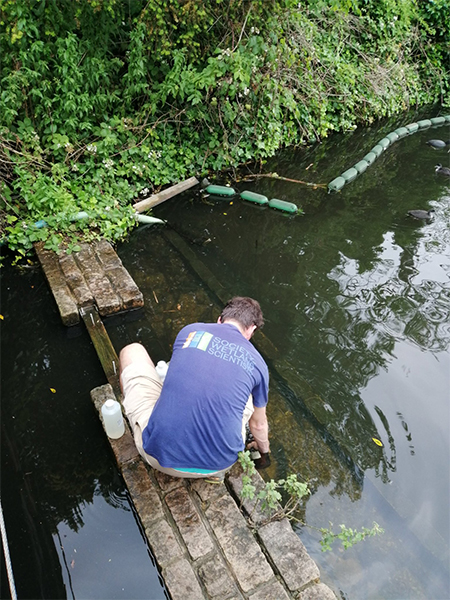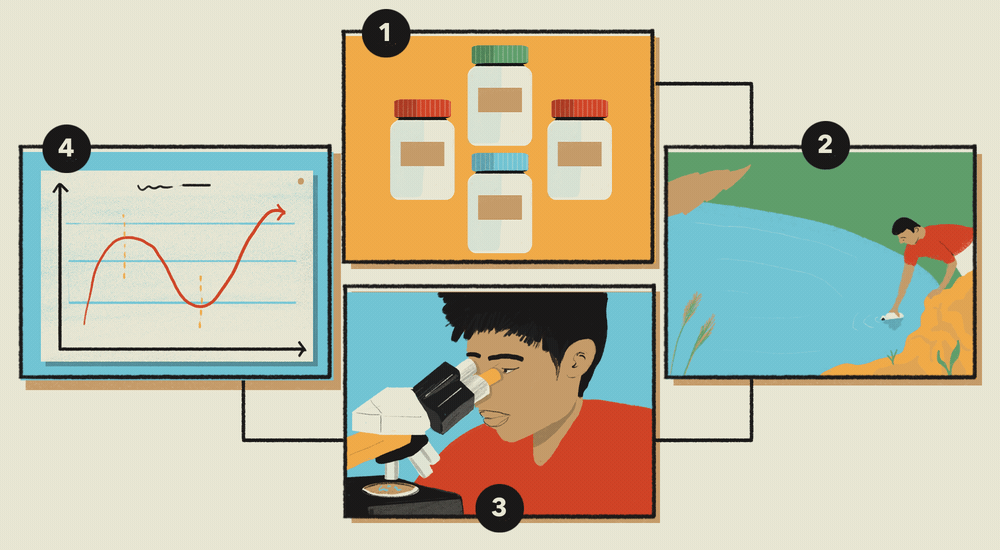What you can use to collect environmental data
3. Recording through collecting a sample
With some environmental changes it is impossible for us to actually see the changes as we cannot observe them with our eyes. A good example of this is with air or water pollution where chemical or biological changes occur that are not visible to us. In these cases, to detect any changes, then a good technique is to collect a sample and have it analysed at a laboratory. A one off sample will only give you an idea of what is happening at one particular point in time but collecting regular samples will allow you to understand how changes occur over time or after specific events, such as after a rainstorm, for example. Data collected and analysed can be organised as tables or as graphs showing changes over time.

Steps to follow: